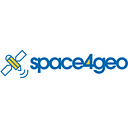How the EO4GEO BoK tools facilitate the hiring process: a SME experience
The EO4GEO BoK tools are innovative collaborative tools, based on the EO4GEO Body of Knowledge (BoK) and containing several functionalities.
Among them, the Occupational Profile Tool and the Job Offer Tool are meant to support the labour market of the EO*GI sector, allowing to create and explore occupational profiles and job offers.
Occupational profiles can be defined as generic, recurring, prototypical job descriptions, including the required knowledge and skills to be able to perform that jobs. The Occupational Profile Tool helps to describe them in a standardized way. The Job Offer Tool allows to create job and training offer, starting from an existing occupational profile or from scratch.
The mentioned tools can support the hiring process of big companies as well as of SMEs, but also of Public Authorities active in the EO*GI sector.
Epsilon Italia, a SME member of the EO4GEO consortium, tested the EO4GEO BoK Tools in a hiring process, related to the interest to hire one resource to involve in two business processes (BP) frequently executed within the company:
- BP1: extract information from Copernicus Level2 data, applying AI algorithms
- BP2: integrate the information extracted (in the frame of BP1) into existing SDIs, taking care of data modelling aspects if needed.
The CEO explored the available Occupational Profiles, using the related tool simply using the keyword “Copernicus”. Then he found 2 Occupational Profiles close to the relevant BPs:
- Expert on information extraction from Copernicus space data
- Expert on integration of Copernicus space data into SDIs
Each occupational profile is linked to the EO4GEO Body of Knowledge for EO*GI-specific knowledge and skills, to the European Skills/Competences and Occupation (ESCO) classification for transversal and cross-sectoral skills and to UNESCO’s International Standard Classification of Education: Fields of Education and Training (ISCED-F) classification for the application field.
For a deeper investigation of the knowledge and skills related to the occupational profiles, the CEO used the BoK Visualization and Search Tool, which allows to navigate and visualize the EO4GEO BoK in an intuitive graphical and textual way. Starting from higher level concepts, representing areas of knowledge of the EO*GI sector, it’s possible to browse down to more detailed concepts and to explore the connected skills.
Because the company was interested to hire only one expert, it was used the JOT to create the JO “Copernicus expert”, described as follow:
“The expert has to be familiar with the Copernicus data and services, as well as with the tools to access and retrieve the data of the different Copernicus sensors from the different on-line repositories. Moreover, (s)he has to be familiar with the application of AI-based techniques (e.g. machine learning, big data analytics, deep learning, neural networks) to extract information from the Copernicus data. (S)he has to be familiar also with the integration of Copernicus data (and related information extracted from them) in Spatial Data Infrastructures.”
The knowledge and skills of both occupational profiles previously selected were included in the new job offer, adding few additional hard skills, as well as some soft skills.
Once the preparation of the job offer was completed, it was published in the EO4GEO website, publicly available for anyone interested. Then, Epsilon Italia simulated the second phase of the hiring process, consisting in processing the applications received. Also in this phase the EO4GEO BoK tools provide an added value, consisting in the comparability of the “resources” created using the tools, since all of them are based on the knowledge and skills described in the EO4GEO BoK.
Because the curricula submitted by the applicants were PDF files using the Europass format, they weren’t immediately comparable to the job offer created by Epsilon Italia.
Therefore, using the Bok Annotation Tool and the BoK Matching Tool the CEO was prevented from manually comparing all the resources of interest (the job offer and the CVs received by the applicants).
Indeed, the BoK Annotation Tool allows to easily annotate (associate) any PDF document with EO4GEO BoK concepts, automatically editing the pdf file metadata, adding the requested annotations using the Resource Description Framework (RDF).
Then, the annotated CVs and the job offer were compared in the Bok Matching Tool, which, in few clicks, shows all the matching knowledge, as well as the differing ones.
In this way, it was possible to easily assess if the applications received met the requirements in terms of knowledge contained in the job offer.
All the mentioned tools proved to be of great help in everyday business activities, allowing to create standardized resources, comparable in a semi-automated way.
